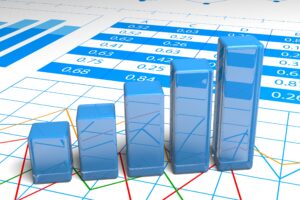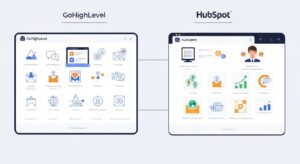From Data to Decisions: Using CRM Analytics to Improve Conversions

If agencies want to grow in a way that doesn’t harm the environment, they need to learn how to turn those leads into customers more efficiently. A lot of teams put a lot of effort into ads, marketing, and projects that are at the top of the flow. But a lot of opportunities are lost because it’s not easy to see how those leads act as they move through the chain.
CRM analytics for conversions comes in handy in situations like these. Agencies can find bottlenecks, improve their processes, and make better choices that have a direct effect on close rates by turning raw data into insights that can be used. Data-driven plans are no longer a nice-to-have; they’re a must in a world where speed and accuracy decide who wins the deal.
Why Guesswork Hurts Conversions
One problem that often happens as an agency grows is that it has to make decisions based on gut feelings or reports that aren’t full. A sales manager might think that a promotion isn’t working, but the real problem could be that follow-ups aren’t being done on time. A marketing team might be happy about a high click-through rate without understanding that most of those leads don’t turn into sales.
Agencies make bad choices when they make decisions based on opinions instead of facts. For example, they spend more on platforms that don’t turn well, focus on the wrong types of leads, or don’t fix important problems in their sales process.
This guessing is taken away by CRM analytics, which shows exactly what happens at each stage of the process. Teams don’t have to respond without thinking; they can act with precision, focusing on changes that really make a difference.
Turning Raw Data into Strategic Insights
More than just lead sources, reaction times, pipeline stages, deal amounts, close rates, and more are all tracked by most CRMs. But gathering information isn’t enough; what counts is how that information is used and examined.
CRM analytics puts together data from different stages of the sales cycle and shows it in a clear, graphical way. For instance, screens might show that leads from a certain promotion always get stuck at a certain point. Or, studies might show that deals over a certain size take longer to close but turn over more often once they get to the follow-up stage.
With this kind of information, governments can figure out exactly where to put their efforts. Instead of making big, random changes, they can focus on making small improvements, like changing the criteria for lead approval or the time of follow-ups.
Identifying Bottlenecks Before They Cost You
One of the best things about CRM data is that it lets you find problems early on. Agents can see where leads are slowing down or dropping off by keeping an eye on conversion rates and the amount of time spent in each stage of the process.
For instance, if the data shows that a lot of leads stay in the proposal stage for weeks on end, that’s a clear sign of a problem. It could be a lack of automatic messages, slow internal decisions, or deal arrangements that aren’t clear. If agencies can quickly spot this trend, they can fix it before it costs them money.
The same goes for follow-ups. Often, data shows that if you don’t follow up with a lead right away, it can turn cold, even if it’s a very good one. With analytics, agencies can keep track of response times and contact rates. This way, they can set up systems that handle delays automatically, making sure that no chance is lost.
Using Data to Guide Personalization
Along with solving problems, CRM data helps businesses change how they do things. Find out what these trends are if you want to make more sales. Not every lead will act the same way.
In some fields, SMS follow-ups may work better than emails, or data may show that calls to leads from certain reference sources close the deal faster. Since companies have this information, they can split their watchers into groups and tailor their marketing to each group.
This tradition isn’t based on guesses; it comes from seeing how people act. Over time, these changes based on data make things run more smoothly and increase the number of sales.
How Analytics Strengthens Lead Scoring
To rate leads is one of the best ways to use CRM data. Look at past deals to see what traits high-converting leads share. This will help agencies make score models that put the best chances at the top of the list.
For instance, data could show that leads who connect within the first hour are three times more likely to close, or it could show that companies of a certain size always have a higher term value. The CRM can then instantly give leads scores, which helps the sales team focus on the leads who are most likely to become buyers.
Analyzing things in this way makes predictive models better and makes sure that sales teams don’t waste time calling on leads that aren’t interested. This is a lot like how AI-powered score systems work; they use data to figure out which quick wins are the most important.
Forecasting with Confidence
One of the best things about CRM data for sales is that it helps you plan better. Companies that want to grow need to have correct income forecasts because they help them hire people, make budgets, and sell themselves.
Company can guess what will happen based on past conversion rates, pipeline pace, and marketing success when they use data. They don’t have to guess what will happen; they can use real numbers.
Based on how many leads the business has now, they can safely guess how much money they will make in the future, say 30% of accepted leads turn into sales within 21 days. It is easy to plan when there is this much dependability. Bad shocks are less likely to happen.
Linking Data with Action
Understanding things in depth doesn’t help if they don’t lead to action. What makes CRM data really useful is how it connects results to actions.
If the CRM sees a trend, like fewer sales at a certain point or one source of leads doing better than others, it should make changes right away. If you do this, you might have to start different follow-up methods, give leads to different salespeople, or change the budget for your campaign at the last minute.
This feedback process keeps performance high when you use these important lessons in your daily work. The process moves faster, works better, and is more successful every time data is gathered and action is taken.
Strengthening the Foundation of the Sales Engine
In every way, CRM analytics is a strategic tool that helps the business grow. It’s not just a way to make reports. Data can help agencies get their teams to work together toward clear, measured goals. It can be used to find gaps, customize contact, rank leads, and make accurate predictions.
This teamwork is what turns efforts that are spread out into plans that always get the job done. That way, leaders can focus on making the most important changes, and teams will have the confidence to act.
And when all of these analytical insights are linked to a strong CRM system, agencies have a base that can support not only sales today but also growth tomorrow. The core framework on the site is a great place for companies that want to build that kind of organization to start.

Conclusion
We can’t just go with our gut or use simple tests these days when it comes to sales. Agents that know how to use their data well are smart. When teams use CRM analytics for conversions, they can quickly find problems, customize their engagement, set smart goals, and safely make plans.
Not only is reporting better, but sales cycles are faster, close rates are higher, and growth can be turned up or down as needed. More and more, the market is based on data. To fight and win in this market, agencies should make analytics a big part of their CRM plan.






